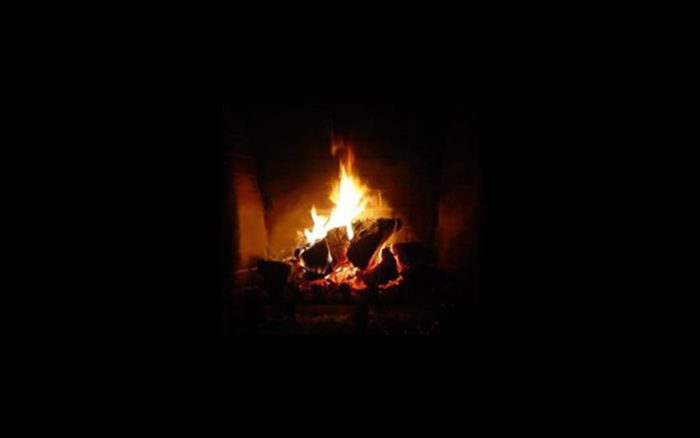Article by Patricia Damery and
Photo Art by Bill Fulton
Meditation at First Light
Finally Fire flares
and the stove clucks.
Too much worry.
But the day warms
even in the dark.
Manitou
In my late 20’s I had one of the more important dreams of my life. I dreamed of war and devastation, and then of a marriage and the need to find a “manitou” for reconstruction. In the dream, a manitou was a large, black, penguin-like bird.
The night of the dream, my husband and I had gone to a hot springs, which had no electricity. We went to bed early and I awoke from this dream at 4 a.m. after having slept eight hours and wrote down the dream. I then went out to the pools to soak in the hot sulfur springs. Emerging from one of the baths, I was shocked to see that I had turned entirely black! Later I learned that the hard water of my home had left mineral deposits that interacted with these springs to coat my skin, which remained black for a couple of days! This dream was truly about a darkening, a moving into matter, or the nigredo! After this blackening experience, I slept another eight hours.
The dream continues to be one that I return to periodically. It illustrates both the problem I was facing at the time as well as the future course of my life. I valued the intellect, having studied both chemistry and math as an undergraduate, then teaching both. Science as it is taught in our schools is heady. Those masculine qualities of discriminating thought, reasoning, and linear thinking are highly valued, and I did well here.
I had never heard of manitou but it was such a compelling word for me that I searched indexes. The term is not familiar in the English language but is important to the native peoples who had populated the area in which I grew up and to the east: the Algonquian-speaking peoples, peoples linguistically connected with those of northern California, the Wilkit and Yurok and probably also the Hoopa and Kurock, and the Tungus of Siberia, a tribe where the earliest records of shamanism exist. Manitou defies translation, perhaps because it is a concept so old and deep rooted in our Western European culture that it no longer reaches the light of consciousness. It is tempting to equate the word with what Westerners refer to as the Great Spirit. “Great Spirit” reflects the Western European concept of the divine, which is also one of polarity: Great Spirit—and His creations.
Early Europeans visiting the continent noticed how the placement of so-called manitou stones revealed a harmony of sky and earth through many astronomical alignments. A Jesuit missionary in Canada, Father Paul Le Jeune, observed in 1636 that the Indians addressed themselves to the Earth, the Rivers, the Lakes, dangerous Rocks and especially the Sky, believing that all of these are animate. Manitou may best describe the animating spirit that is All. Later Western European interpretations define Manitou as “anyone of the spirits which control the forces of nature,”[1]
But here we are getting into a paradigm of cause and effect. The Native American view of the world is a whole of which we are one part, and a newer part at that. Humans are not to dominate and change the world, but to live harmoniously in it. This suggests another meaning of Manitou, best articulated by James Mavor and Byron Dix, two scientists who studied the manitou stones of New England,
‘We perceive manitou as the spiritual quality possessed by every part or aspect of nature, animate or inanimate. Things relate to each other by means of this quality, which may be good or evil, temporary or permanent, fixed or changing. Manitou includes aspects of the natural world that are sensed but not understood.’ [2]
These men surmised that stones might be placed in areas to increase the manitou of a place. Many of these stones look very much like a human torso— or penguin! By setting the stone, the human was interjecting self into the equation. Perhaps the placement of the stone established the intention of harmonious balance.
This state of consciousness is not familiar to Westerners. Think of the Beltane fires of Ireland in which fires were built on inner and outer rings, the eye of Eriu, the goddess of Ireland herself, uniting all participants in a renewal through a participation mystic with the land, the fire, the sun. People entered into a communal instinctive knowing which Westerners have denigrated over the last two to three hundred years.
In my dream, it was this manitou that was needed for the reconstruction. As a Jungian analyst I might interpret it to symbolize the transcendent function, that marrying of opposites that had been at war. Yet I wonder how the native wisdom of our land can inform me? Sioux scholar Vine Deloria, Jr. describes Westerners tendency to symbolize what is actually a representation of autonomous spirit. Perhaps finding the manitou is not symbolic but an expression of the dire need for “an invocation or invitation …to higher powers to enter into a special kind of event.”[3] For me, this “special event” has to do with the relatedness of nature and the otherness of it, while also experiencing myself as a harmonious part of the whole.
Farming Soul, a courageous offering that will help to reconnect us to our deeper selves, the often untouched realities of soul, and at the same time ground us in our physical relationship to self and Mother Earth.
[1] James W. Mavor, Jr. and Byron E. Dix, The Sacred Landscape of New England’s Native Civilization: Manitou,(Rochester,Vermont: Inner Traditions International,1989), 2.
[2] Mavor and Dix, Manitou, 343.
[3] Vine Deloria, Jr., Philip Deloria, and Jerome Bernstein, C. G. Jung and the Sioux Traditions: Dreams, Visions, Nature, and the Primitive, (New Orleans, Louisiana: Spring Journal, Inc., 2009), 197.
